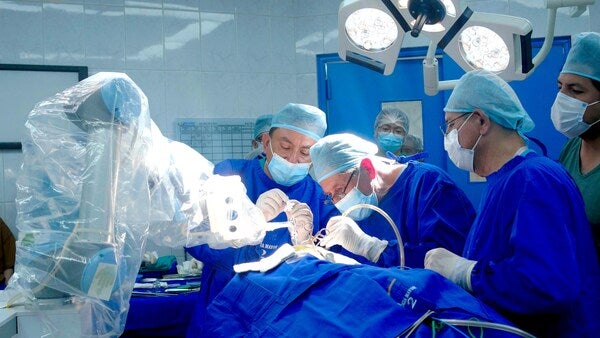Pushing the Boundaries: Microchip Resolution Reaches New Heights

Researchers at the Paul Scherrer Institute (PSI) have achieved a significant breakthrough in photolithography, a key process for manufacturing computer chips. Their groundbreaking technique allows for the creation of even denser circuit patterns, pushing the limits of miniaturization and paving the way for even smaller and more powerful computers.
The relentless pursuit of miniaturization is a cornerstone of the digital revolution. As computer chips shrink, they become more powerful and energy-efficient, enabling advances in fields like autonomous driving, artificial intelligence, and 5G mobile communications. This latest research from PSI brings us closer to the next generation of computing.
The Current Landscape
Current state-of-the-art microchips boast conductive tracks separated by a mere twelve nanometres, a distance equivalent to 6000 times thinner than a human hair. The PSI team, led by Iason Giannopoulos, Yasin Ekinci, and Dimitrios Kazazis, has surpassed this feat by successfully producing tracks with a separation of just five nanometres. This remarkable achievement signifies a significant leap forward in circuit density.
The Power of Light
The process of photolithography, akin to the way pictures are displayed on a cinema screen, has been instrumental in the development of microchips. It involves coating a silicon wafer with a light-sensitive material, called photoresist, which is then exposed to a pattern of light corresponding to the desired chip design. This exposure alters the chemical properties of the photoresist, making it either soluble or insoluble to certain solutions. Subsequent treatment removes the exposed or unexposed regions, leaving behind the conductive tracks that form the intricate wiring patterns of the microchip.
The wavelength of the light used in this process plays a crucial role in determining the size of the features that can be printed. For years, the industry relied on deep ultraviolet (DUV) light with a wavelength of 193 nanometres. However, in 2019, the industry transitioned to "extreme ultraviolet light" (EUV) with a wavelength of 13.5 nanometres, more than ten times shorter than DUV. This leap allowed for the creation of even finer structures, down to ten nanometres and beyond.
A New Approach: EUV Mirror Interference Lithography
The PSI researchers took this technology a step further by employing a technique called EUV Mirror Interference Lithography (MIL). In this method, two coherent beams of EUV light are reflected onto the wafer by identical mirrors, creating an interference pattern with a periodicity dependent on the angle of incidence and the wavelength of the light. This innovative approach has yielded unprecedented results, allowing for the production of conductive tracks with a separation of just five nanometres in a single exposure.
The Promise of the Future
While the current application of MIL is primarily for research and development due to its speed limitations and suitability for only simple structures, it holds immense promise for future chip production. This groundbreaking technique enables the early development of photoresists, critical for future chips with resolutions currently unattainable in the industry.
The team at PSI is poised to continue their research with the arrival of a new EUV tool at the SLS facility, expected by the end of 2025. This new tool, coupled with the upgraded SLS 2.0, will further enhance their capabilities and propel their research to new heights.
This significant advancement in photolithography research signifies a major step towards the next generation of smaller, more powerful, and more energy-efficient computers. As the technology continues to evolve, we can expect to see even more remarkable breakthroughs in the field of computing, driving innovation across various sectors of society.





